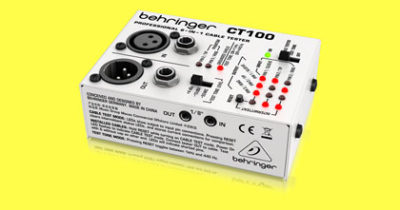Outside Scoop: 3 Tips to Get More Clients, 16 Essential Tools for Live Sound Engineers, and More
The Outside Scoop has been running strong for a number of months now, and this week we’re driving full steam ahead into the latest and greatest production articles and videos. There are recording techniques, mixing strategies, business tips, and even a synthesis tutorial that made their way into this roundup. Whether you’re trying to get more clients in the doors of your studio, or looking to snag all the essential tools for your mobile live sound gig bag, you’ll find what you’re looking for here.
3 Tips to Get More Clients
Austin Hull of Make Pop Music walks through three essential ways that he himself goes about acquiring new clients. If you’re a producer, mixing engineer, or mastering engineer, this video has some great insight into what steps you can start taking to capitalize on your time and make more money from your work. One of the most important points Hull makes is that even while you’re pursuing new clients, you need to value your time and charge accordingly.
Do You Need Acoustic Treatment?
Acoustic treatment can help minimize the effects your room has on the sound coming from your speakers while mixing and mastering. For example, an untreated room can impart its own reverb on the sound you’re hearing. To create a mix that will translate well to other playback systems, you’ll want to make sure that you’re only hearing the reverb you’ve applied within your DAW. Rob Mayzes describes further benefits of sound treating your room, and how to go about treating a room yourself.
11 Considerations When Recording Background Vocals
Bobby Owsinski has created a short and sweet list of recording techniques that will help tremendously with tracking background vocals. A good mix stems from quality recordings; which also help to save time when mixing. Read the full blog post via Bobby Owsinski’s website to add these valuable recording techniques to your tool kit.
5 Tips for Achieving the Best Vocal Comp
The Pro Audio files recently published an article, by Thomas Brett, on how to edit perfect vocal comps. If you’re unfamiliar with the concept of vocal comping, it’s when you select and combine multiple takes of a vocal into a single, final take. Brett takes us for an in-depth ride through what’s required to masterfully comp vocals using a note pad, a limited number of recordings, and more.
Gain Staging in and out of the Box
This is almost undoubtedly the most comprehensive gain staging tutorial I’ve come across. It explains what you need to take into consideration when gain staging entirely in the box, using a hybrid ITB/OTB set up, and when mixing entirely with external hardware, where noise can become an issue. Watch the full video with David Gnozzi of MixBusTV to ensure that you’re gain staging properly.
How To Make Synthesized Techno Hats
I wrote an article for SonicScoop in November called “How to Synthesize Your Own Drum Samples” that covers the creation of kicks, snares, toms, claps, hi-hats, and cymbals. Sadowick explains his method for creating hi-hats that pairs with the guide I wrote very well. He uses the oscillator section in Serum, a custom waveform. and Serum’s LFO section to create evolving hi-hat textures over time.
16 Essential Tools for Live Sound Engineers
Brad Pack has compiled a list of 16 gifts that you can give that special live sound engineer in your life. As much as this is a useful gift guide, it contains many items like hearing protection, gaffer tape, and DI boxes that are a great thing to have kicking around in your road bag. I was pleased to see that tools like the Galaxy Audio Check Mate CM-130 SPL Meter made the list, along with the Behringer 6-in-1 CT100 cable tester, which can help troubleshoot some catastrophic signal flow issues at live events.
Are Third-Party Plugins Really Better Than Stock Plugins?
Warren Huart of Produce Like a Pro has a good deal to say about mixing with stock plugins and admits to having mixed a fair number of songs without third-party plugins. He admits that there are a couple of third-party plugins like Waves MV2 and RBass that he doesn’t think would be possible to replicate using stock devices. Continuing on, he explains how most stock plugins sound quite “neutral,” while hardware emulations can pleasantly color your sound. Watch the full video for an in-depth look at what is, and isn’t, possible with stock plugins.
15 Critical Music Promotion and Marketing Tips
This article by EDMProd describes how you must shift between an artist and a business mindset to profit off of your work. There are plenty of great artists out there, but the ones who are living off of their art are the ones with great entrepreneurial skills. EDMProd goes over optimizing your brand for super fans, turning other artists into listeners, analyzing data, and more.
Charles Hoffman is a Mixing and Mastering Engineer at Black Ghost Audio. After graduating from the University of Manitoba with an English degree, Charles completed his education at Icon Collective in Los Angeles, CA.
Please note: When you buy products through links on this page, we may earn an affiliate commission.








[…] http://sonicscoop.com/2019/03/30/outside-scoop-3-tips-to-get-more-clients-16-essential-tools-for-li… Outside Scoop: 3 Tips to Get More Clients, 16 Essential Tools for Live Sound Engineers, and More […]